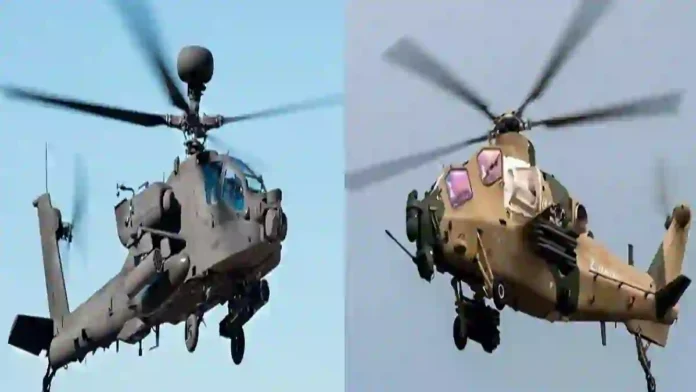Pakistan has recently inducted China’s Z-10ME attack helicopters into its army aviation, significantly enhancing its aerial combat capabilities with a modern, all-weather precision strike platform. The Z-10ME, an export variant of the Chinese Z-10, is designed for multi-role attack functions including counterinsurgency, anti-armour, and hybrid warfare missions across Pakistan’s diverse and challenging terrain.
It boasts a cruise speed of 270 km/h, a top speed reaching 300 km/h, and a combat radius up to 500 km with an operational range surpassing 800 km with auxiliary fuel tanks, suitable for deep strike missions and extended operational endurance of up to 3.5 hours.
Read- Putin Offers ‘Golden Deal’ As India Rejects Trump’s F-35; Russian Su-57 Jet Now in Play
The helicopter is equipped with a tandem cockpit, advanced avionics including helmet-mounted sights, electro-optical/infrared targeting turrets, multi-function glass cockpits, and potentially a millimetre-wave radar pod for all-weather targeting.
Its survivability is enhanced by modular composite armour, infrared suppression systems that reduce IR signatures by about 63%, self-sealing fuel tanks, and an array of defensive electronic countermeasures such as radar and laser warning receivers and missile approach warning systems.
The Z-10ME is armed with an upgraded 30 mm chain gun with increased ammunition capacity, multiple hard-points capable of carrying up to 16 CM-502KG air-to-ground missiles, TY-90 air-to-air missiles optimized for helicopter dogfights, guided rockets with high precision, and compatible loitering munitions and drones for layered reconnaissance and stand-off strike capabilities.
It can operate efficiently in high-altitude, mountainous environments like the Karakoram range, maintaining performance with minimal engine power loss and greater maneuverability in low-altitude, confined terrain conditions compared to the AH-64E Apache Guardian.
In parallel, India is strengthening its air power on the opposite front with the deployment of the U.S.-made AH-64E Apache Guardians, freshly inducted into the Indian Army around late July 2025.
The Apache Guardian is a battle-proven attack helicopter globally recognised for its combat endurance and advanced sensor suite, including the Longbow radar capable of tracking multiple targets, night vision systems, and integration with NATO-standard digital command and control systems.
Read- How Feasible Would South Korea’s KF-21 ‘Boramae’ Be For The Indian Air Force?
Read- ‘Ties With Russia Time-Tested’: India Brushes Off Trump’s Penalty Threat On Energy Imports
It delivers formidable firepower through AGM-114 Hellfire missiles, a 30 mm M230 chain gun, and rockets, being highly interoperable with allied forces’ equipment. Its avionics and electronic warfare systems grant superior battlefield situational awareness and survivability. The Apache’s track record includes numerous operational deployments, giving it an experiential edge in air-to-ground and anti-armour warfare.
The Indian induction of this platform underlines a robust enhancement of its aerial combat readiness alongside upgrades to other combat helicopters. However, its operational use in extremely high-altitude mountainous environments may require weight trade-offs such as temporarily removing the Longbow radar to optimise performance.
This evolving power dynamic, with Pakistan embracing the relatively new but sophisticated Chinese Z-10ME and India fielding the battle-tested American Apache Guardian, reflects an intensifying aerial arms race amid continuing geopolitical tensions.
Pakistan’s Z-10ME offers a cost-effective, well-armoured helicopter tailored to mountainous and desert warfare, delivering credible stand-off precision strike capacity alongside modern survivability features suitable for hybrid warfare challenges.
India’s Apache Guardians bring proven combat performance, superior sensor and network integration, and interoperability within allied forces, maintaining an authoritative aerial edge.
Both nations demonstrate strategic resolve to modernise their attack helicopter fleets, which will critically shape the operational landscape of future conflicts along their contested borders, escalating the race for air superiority on opposing fronts.
WION Video Report
Agency




